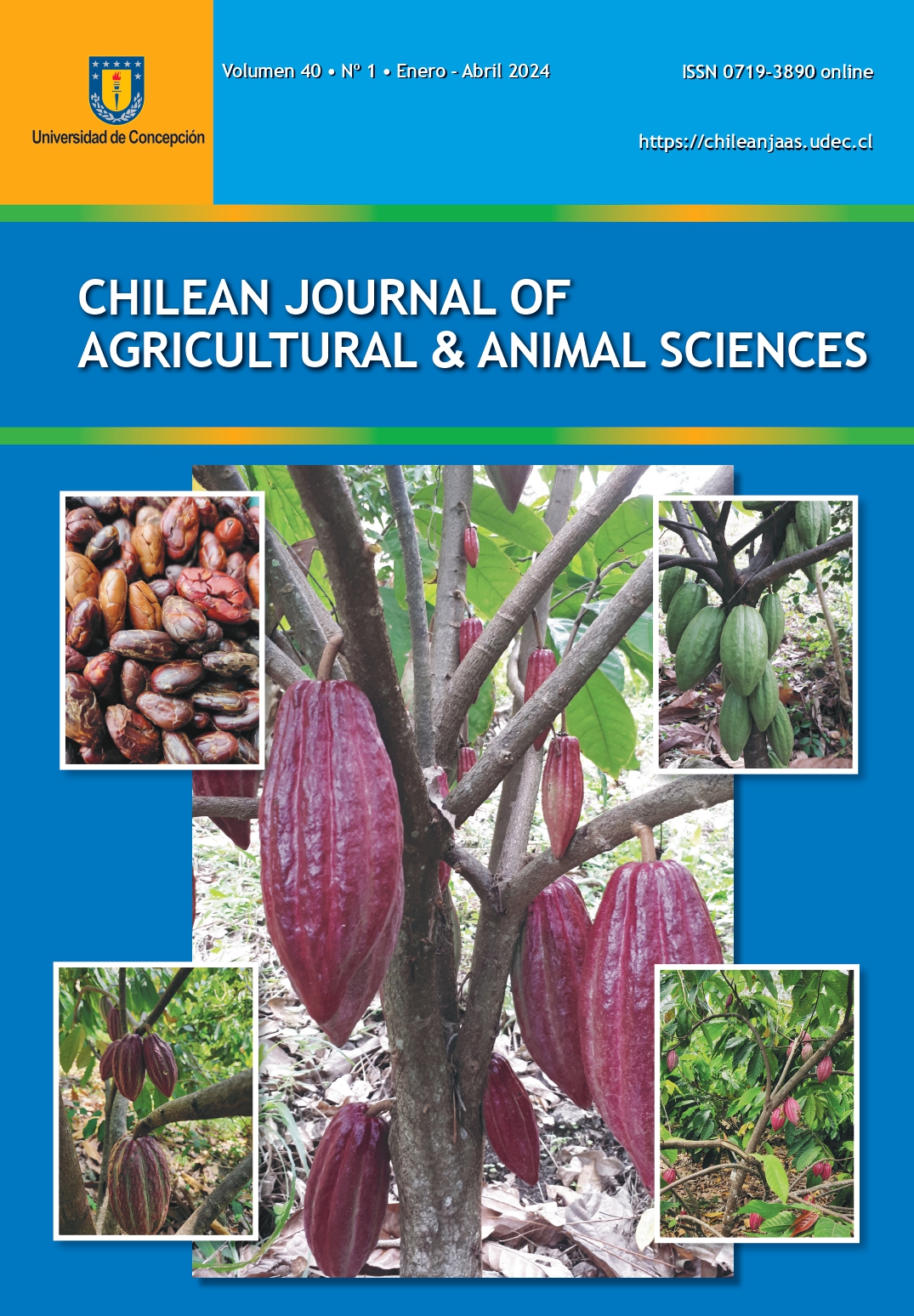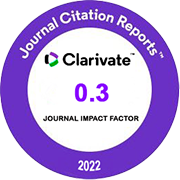MINERAL STATUS OF LACTATING EWES IN THE ARID AND SEMI-ARID ZONES OF NORTH-CENTRAL MEXICO
DOI:
https://doi.org/10.29393/CHJAAS40-9MSIM80009Palabras clave:
Grazing sheep systems, sheep nutrient requirements, mineral deficiencies, mineral supplementation strategies, semi-arid ecosystemsResumen
Profitable sheep production depends greatly on the mineral content of range forages, as adequate nutrition is a prerequisite for reaching the animal’s optimum performance. The objective was to determine the contents of calcium (Ca), phosphorus (P), copper (Cu), zinc (Zn), and manganese (Mn) in range forages and blood serum of grazing, lactating ewes in the arid and semi-arid zones of North-Central Mexico. Samples of forages and blood of lactating ewes were collected in two seasons (spring and winter) from four randomly selected sheep farms located in the state of Aguascalientes. The P content was analyzed using the colorimetrical method, while levels of Ca, Cu, Zn, and Mn were determined by spectrophotometry. Forage mineral content averaged 0.20 % P, 0.34 % Ca, 8 ppm Cu, 483 ppm Mn, and 29 ppm Zn. In blood serum, mineral content reached 20 ppm P, 147 ppm Ca, 0.52 ppm Cu, 2.9 ppm Mn, and 0.80 ppm Zn in winter, and values of 20.5 ppm P, 177 ppm Ca, 0.57 ppm Cu, 3.13 ppm Mn, and 0.89 ppm Zn in spring. Overall, in both spring and winter seasons, 58-100% of sampled forages showed Ca, P, Cu, and Zn deficiencies, but all of them fitted the optimal content of Mn. Blood samples showed similar patterns in winter and spring seasons, Ca was not deficient (145-180 ppm vs. optimal range: 90-120 ppm), but P, Cu, and Zn were deficient (P: 9-21 ppm vs. optimal range: 50-65 ppm; Cu: 0.51-0.58 vs. optimal range: 0.60-1.5 ppm; and Zn: 0.71-0.92 ppm vs. optimal range: 0.50-1.2 ppm); Mn was slightly over the optimal range (2.89-3.2 µg/L vs. optimal range: 2 to 40 µg/L). In some cases, forage mineral content might not be related to blood serum contents. However, it should be desirable to understand all the uncontrolled factors in addition to the mineral interactions that could interfere with further studies.
Descargas
Publicado
Cómo citar
Número
Sección
Derechos de autor 2024 Ignacio Mejía Haro, Deli Nasmin Tirado Gonzalez, Gustavo Tirado Estrada, Victor Manuel Marin Perales, Mauricio Ramos Davila, Jose Manuel Martinez Mireles, Carlos Fernando Arechiga Flores

Esta obra está bajo una licencia internacional Creative Commons Atribución 4.0.






